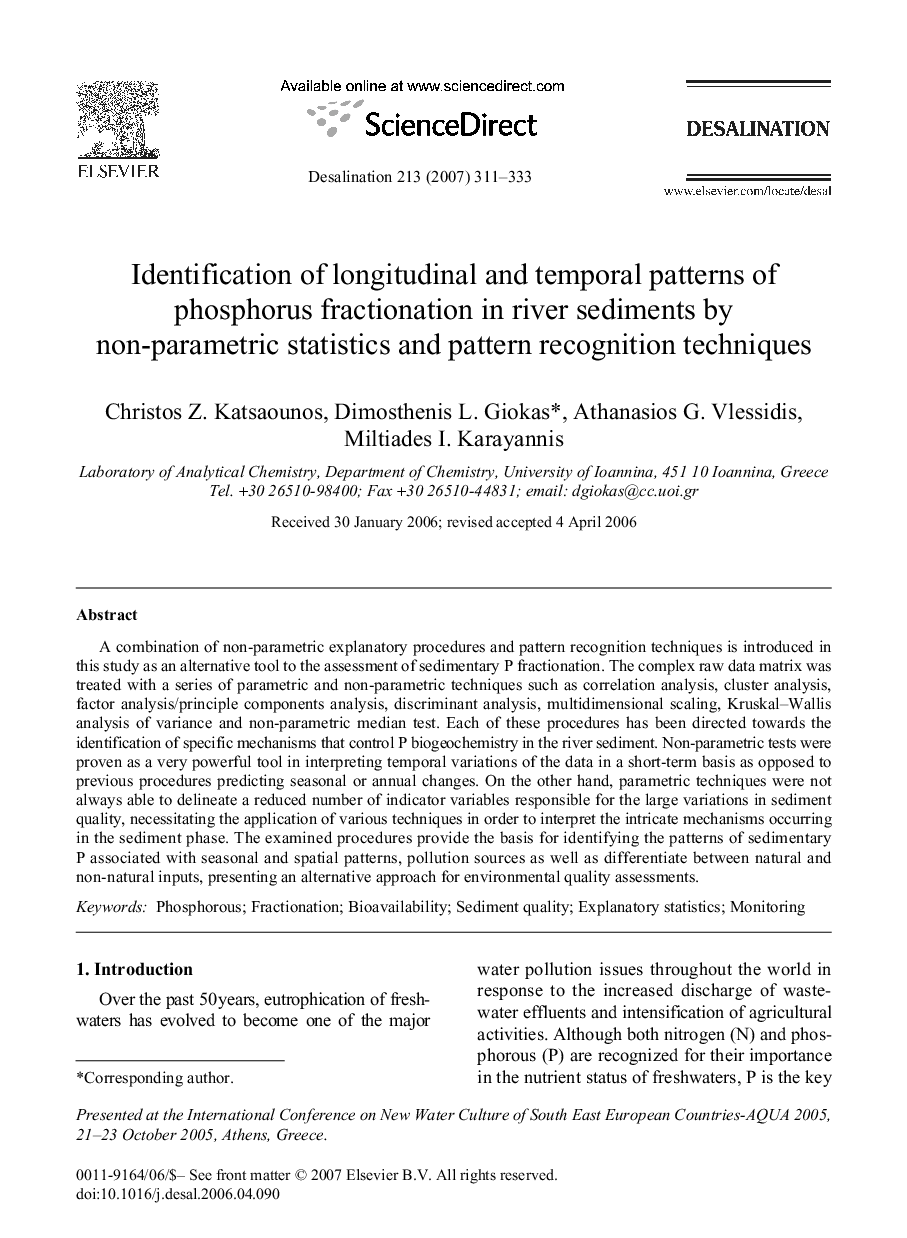| Article ID | Journal | Published Year | Pages | File Type |
|---|---|---|---|---|
| 628116 | Desalination | 2007 | 23 Pages |
A combination of non-parametric explanatory procedures and pattern recognition techniques is introduced in this study as an alternative tool to the assessment of sedimentary P fractionation. The complex raw data matrix was treated with a series of parametric and non-parametric techniques such as correlation analysis, cluster analysis, factor analysis/principle components analysis, discriminant analysis, multidimensional scaling, Kruskal–Wallis analysis of variance and non-parametric median test. Each of these procedures has been directed towards the identification of specific mechanisms that control P biogeochemistry in the river sediment. Non-parametric tests were proven as a very powerful tool in interpreting temporal variations of the data in a short-term basis as opposed to previous procedures predicting seasonal or annual changes. On the other hand, parametric techniques were not always able to delineate a reduced number of indicator variables responsible for the large variations in sediment quality, necessitating the application of various techniques in order to interpret the intricate mechanisms occurring in the sediment phase. The examined procedures provide the basis for identifying the patterns of sedimentary P associated with seasonal and spatial patterns, pollution sources as well as differentiate between natural and non-natural inputs, presenting an alternative approach for environmental quality assessments.
